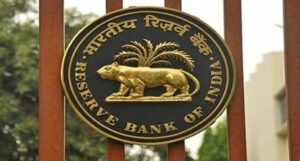RBI announces bi-monthly Monetary Policy; Key policy rates remain unchanged.

The Reserve Bank of India on Wednesday maintained the status quo in key policy rates as the Monetary Policy Committee (MPC) voted unanimously to keep the policy repo rate at four per cent to keep the stance accommodative. While announcing the Bi-monthly Policy, RBI Governor Shaktikant Das said, Marginal Standing Facility (MSF) rate and bank rate will remain unchanged at 4.25 per cent.
The reverse repo rate will also remain unchanged at 3.35 per cent. He said recent reductions in Excise Duty & State VAT on petrol and diesel should support consumption demand by increasing purchasing power.
While expressing satisfaction about the momentum to the economy, Mr Das said, government consumption is also picking up from August, providing support to aggregate demand. He said that the projection for real Gross Domestic Product (GDP) growth is retained at 9.5 per cent in 2021-22, consisting of 6.6 per cent in the third quarter and six per cent in the fourth quarter. He pointed out that the real GDP growth is projected at 17.2 per cent for Q1 of 2022-23 and at 7.8 per cent for Q2 of 2022-23.
The Consumer Price Index (CPI) inflation is projected at 5.3 per cent in 2021-22, which consists of 5.1per cent in Q3, and 5.7 per cent in Q4 with risk broadly balanced. Mr Das also informed that RBI is planning to launch Unified Payment Interface (UPI)-based payment products for feature phone users.
RBI Governor Shaktikanta Das has made an important announcement about the Unified Payment Interface facility while announcing the fourth bi-monthly policy review in Mumbai today. He said that in order to further deepen digital payments and make them more inclusive, it is proposed to launch UPI-based payment products for feature phone users.
The move is expected to ease transactions for consumers, facilitate greater participation of retail customers in various segments of financial markets and enhance the capacity of service providers. He also informed that the bank is also planning to make the process flow for small value transactions simpler through a mechanism of ‘on-device’ wallet in UPI applications.
The Central Bank will also enhance the transaction limit for payments through UPI for the Retail Direct Scheme for investment in G-secs and Initial Public Offering (IPO) applications from two lakh to five lakh rupees.
IMC President, Juzar Khorakiwala has said, they welcome the policy stance as well as forward guidance on policy by the RBI which they believe would further spur economic activities and help bring it back to pre-pandemic level. He said the accommodative policy stance by RBI reflects the confidence that inflation projections would be in line with earlier projections. He said that in the backdrop of the government intervention on the supply side of food products, reduction in excise duty and VAT on petroleum products, further supported by benign metal outlook, RBI rightly maintained an accommodative policy stance as continuing support to the economy.
Rajiv Sabharwal, MD & CEO of Tata Capital Ltd has welcomed the unchanged policy rates but also wants some more measures from the apex bank for broad-based recovery and sustainability of it. He said that there is no upward change in the reverse repo rate as contrary to market anticipations. According to Rajiv Sabharwal, RBI has once again assured the markets that adequate systemic liquidity will be maintained to achieve growth and stability.
Indranil Pan, Chief Economist of YES Bank has said, Monetary policy remains on expected lines, even with respect to the reverse repo rate. He said, RBI paints a relatively docile picture on inflation for now whilst it wants to ‘assiduously’ nurture growth to make it ‘self-sustaining’. He added that RBI keeps the door ajar, but would probably be more patient on inflation being slightly on the higher side than growth on the faltering side.




